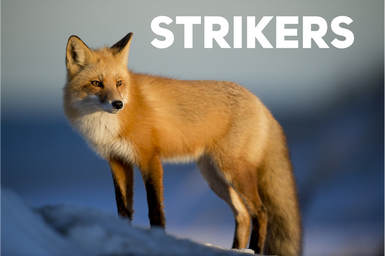|
Of everything shared in the "Being Coached" series, finding the balance in the team is one of the most challenging as a coach. The skills, experiences, and preferences of the players is a puzzle in terms of who's playing in what positions and for how long. Ideally, you want a player that is simply, "ready" and will play anywhere. This is not the norm. Find the positions they kids enjoy the most and can excel in. From there, you'll have to find a way to have them compromise when needed. How? Start with some profiles of the personalities that gravitate to some positions. This isn't definitive, but has been helpful for our teams to put kids in the best positions.  The player that loves to play goal is unique. Most look at as a punishment. It is easily the most critical position on the field at any age or competition level. It's not just to physically stop the scoreboard from piling up. It's to be the leader on the back end of the field. The goalie is an intimidator to the offense and the leader of the defense.  Defensive players are all sizes, skill levels, and speeds. No one attribute is right across the whole group. The key here is a short memory, a fierceness in their personality, and the commitment to work together. No one defensive player can dominate a game. It takes a combination of good anticipation in the game's progression and being in the right places as a unit. This can be the most dramatic place to play on the field as the goal threats are building. This is where the short-term memory attribute comes into play. Goals are not given up by the goalie or the defense. They are given up by the team.  Midfielders are the center of the formation. They can feed the strikers/forwards and draw the ball out of the defensive area. A majority of the game will typically be played in the middle 50% of the field. These players may be challenged the most physically in terms of stamina, rough-housing, and mentally. For these reasons, they are like a pack of wolves. They scheme together towards small movements that add up to scoring chances. Midfielders, especially your center positions are typically the orchestrator of the offensive group as they put have the widest view of the game.  As those chances develop, you have your strikers to act fast and strike. Much like a fox, they lay low for periods of time and are quick to move to the opportunity spot. They are a part of the offensive group with the midfielders and can switch as attacking plays develop. Being sneaky, pays off here. You'll tend to see two defensive players flank one striker to prevent a one on one race if the ball drops over their line.  Where are you in the animal kingdom? Coaches are the gorilla at times. You may be scratching your head at times to find the right thing to do with all these different types of players and personalities, but you'll also have their attention as the leader. Go with your gut and stick to your principles that the kids are familiar with already. If you make the wrong choice, at least you will won't confuse the players by being inconsistent. Don't be afraid to move players around as well. That defensive player may be able to take a nice corner kick or free kick near the goalie box. Diversity in their experiences is a good opportunity for everyone. They may love it. Find the balance for your team and experiment. |
Scott Moroney"As a coach, board member and new SYSA VP, I've likely seen and heard a lot of what you may be wondering how to manage as a parent or player. Great kids with supportive parents make it all a "once in a lifetime" experience. Archives
October 2019
Categories |

 RSS Feed
RSS Feed